How to Start Cycling When You’re Older, According to Riders in Their Golden Years
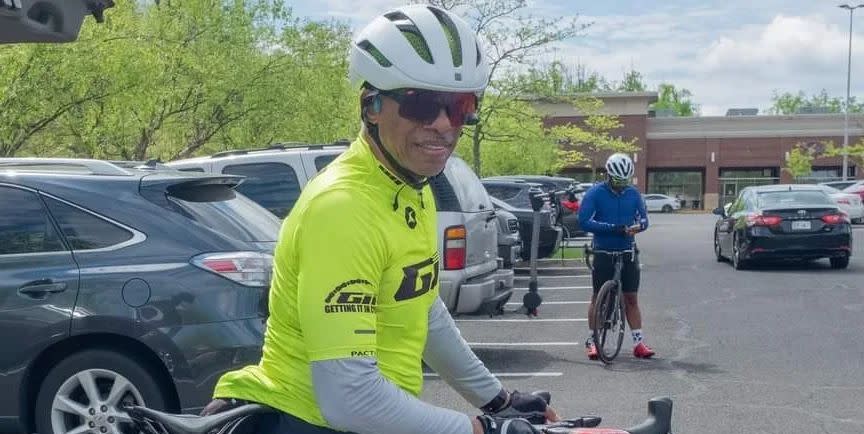
"Hearst Magazines and Yahoo may earn commission or revenue on some items through these links."
Low impact and easy on the joints, you can start cycling at any age—and keep rolling for a lifetime.
“I see this as something I will do as long as I can turn the pedals,” says Anthony Nicholas, 63, from Virginia Beach, Virginia, who started riding at the age of 60 during the COVID-19 pandemic in September 2020.
While the pandemic got many people into the sport—a new report actually says spending on bikes and bike accessories rose 620 percent from 2020 to 2023—it can offer a range of benefits for people of all ages, no matter when or why you begin.
“When I cycle, I ride to recapture my 8-year-old self, zooming down the road without a care in the world. And I love to be out interacting with nature,” says Russ Cole, 63, from Fort Collins, Colorado, who has been cycling for more than 55 years. “Cycling renews and rejuvenates my soul.”
Gaylene Halter, 69, from Calgary, Alberta, Canada, who has been cycling for more than 60 years agrees and points to the low-impact nature of the sport for keeping her pedaling. “I was a competitive runner in my 40s,” she says. “Cycling is easier on the body than running, and I enjoy meeting up with other riders for a day tour or a multi-day tour.”
While cycling in your later years can sometimes come with challenges, whether you need extra rest days, focused nutrition, or group rides that cater to your specific goals and skills, it’s absolutely possible to clock regular weekly hours in the saddle—and to have fun doing it.
Before you start riding regularly, check with your doctor, but once you have the go-ahead, we have more senior cycling tips from riders who frequently turn the pedals into their golden years. Let their stories and advice convince you that there’s no better time to get spinning than today.
10 Senior Cycling Tips to Inspire You to Spend Time in the Saddle
1. Just start pedaling
It is no secret that cycling is known as a lifelong sport—even if you didn’t grow up riding a bike, it’s something you can pick up at any point in your life.
“I began [cycling in 2020], like many, as a way to be outside and do something safe for peace of mind during the pandemic,” Nicholas explains. “It started as a casual ride around the neighborhood once or twice a week and my intent was to keep it as such. After just a few short months of casual cycling, I began to incorporate cycling as a part of my cardio and endurance routine. My casual ride has turned into cycling more than 6,000 miles each of the last two years.”
If you’ve never ridden regular miles before, it’s important to start slow. After all, just like you wouldn’t go from walking down the block to running a marathon, you need time to build up your endurance and cardio capacity to take on the miles. So ease in, but know as you progress, there’s no limit to how much you can gain from regular rides. The key is just getting started and keeping it consistent.
2. Focus on recovery
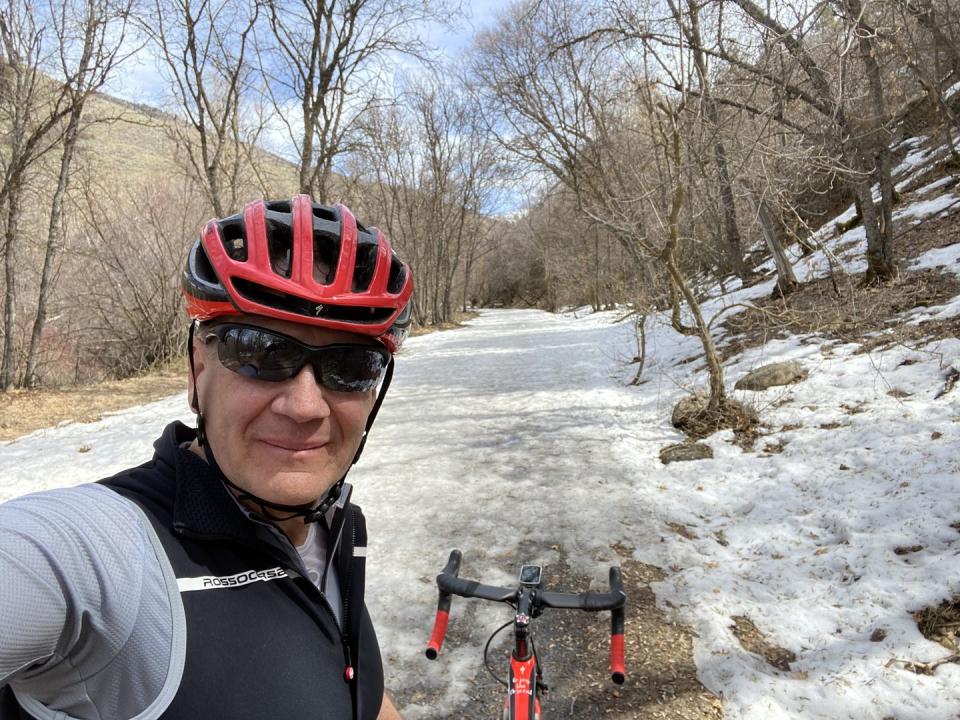
Recovery is just as important as pushing yourself, so make sure to balance movement and rest. “I know when to allow time for recovery, rest, and rejuvenation. I try to be very self-aware of my body and energy level,” says Cole, who adjusts his nutrition and downtime to his training schedule. “When training for long-distance endurance riding over a six- to 12- (or more) week block of training, I may take a week of recovery and largely stay off the bike after completing whatever event or special ride I had planned.”
It make take time to figure out how many rest days a week you need, or how long to take a break from the bike after a big event, but don’t be surprised if you require a little extra recovery than you expected.
“Recovery isn’t as fast as it used to be and I need to stretch a lot in order to keep my legs and back loose,” says Gene Taylor, 63, from Smithfield, Utah, who has been cycling for 30 years. “It can also be a little discouraging not to ride as fast or far as I did five or 10 years ago. I constantly remind myself that I’m not 40 or 50 any more.”
Lloyd Mason, 62, from Brandywine, Maryland, who has been cycling for 15 years, agrees. “As we age, our bodies do not bounce back as fast from a longer ride as we did in our 40s and 50s. In my 60s, longer rides require longer recovery time,” he explains. “To balance this, I take more time off from a long ride and continue to train with light weights on the body parts not used while cycling. Combining more rest and strength training prevents injuries and prepares me physically and mentally when I have a big ride coming up.”
3. Keep time management in mind
Whether you’re retired or still working full time, fitting in a bike ride can be tough if you don’t manage your time well.
“Time management is a challenge for us all. As a retirement-age empty nester, still working full-time with an active family and personal life, I have had to improve my ability to make time for the priorities in my life, and health is a major one,” says Cole, who keeps his health top of mind when working through a 5 a.m. workout, knowing he can’t train later in the day.
“I’ll start with a 12-week plan, then break it down by week and then plan out a flexible training schedule around all my other responsibilities,” he adds. “As we get older, staying busy and focused helps us thrive.”
Daryl Mcfarley, 66, from Charlotte, North Carolina, who has been cycling for decades, also prioritizes morning rides so he can make sure to get them done for the day. “Stay motivated and don’t make excuses to not ride,” he says. “I enjoy morning rides due to the fact that you get your riding done and have your whole day ahead feeling like you’ve already accomplished something significant.”
4. Find what works for and excites you
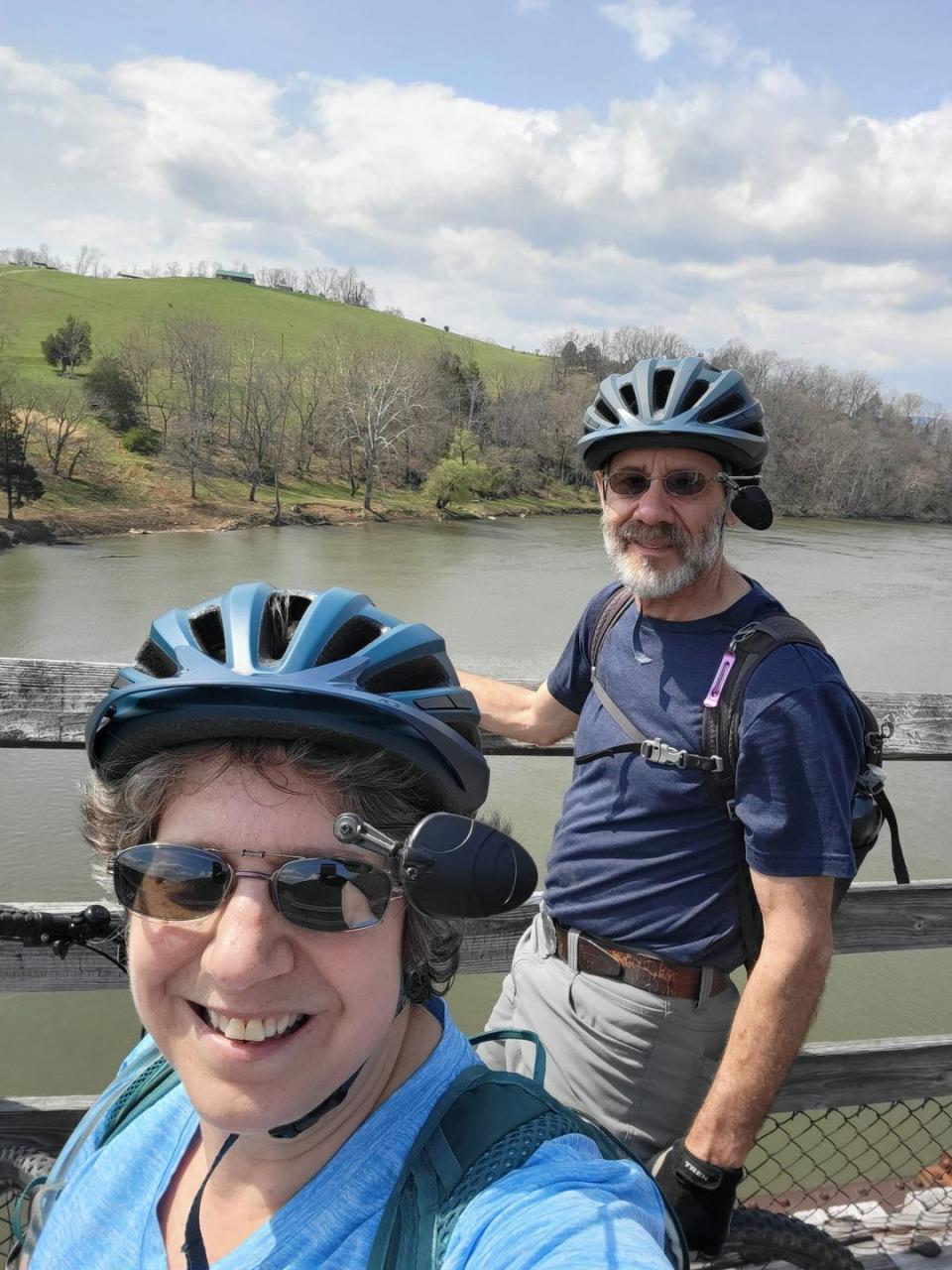
“There are new challenges as an older biker. Increasing awareness of potential fragility means we take easier paths, and avoid rocky or really steep trails,” says Lynn McKee, 64, from Fort Valley, Virginia. She started riding when she was 5 years old, and has been mountain biking for 30 years. “When riding single-track, the hills are definitely much harder as I’ve aged, but I’m not ashamed to take my bike for a hike up hills in order to get the fun downhill runs... Being older bikers means we don’t feel that we have anything to prove to anyone else.”
McKee has learned what works best for her and brings her the most joy on rides. In addition to downhills, that also includes discovering new routes and places to explore with her husband. As of late, that means riding rail trails.
“Since we are new to the rail trails we’d like to ride as many as we can. We love to explore new places,” says McKee. “We are planning a month-long camping trip out west this spring, which revolves around a variety of trails, both rail trails and single-track.”
Also, while some people prefer long and easy rides, others prefer a little more speed and adventure.
“In contrast to the societal belief that you should slow down in your 60s and later, I intend to go farther, higher, and faster as long as I can—within reason,” says Cole. He’s summited Mount Evans in Colorado, which climbs more than 7,000 feet over 28 miles and hits an altitude of more than 14,000 feet. “My next goal is to summit Mount Evans and Pikes Peak on two consecutive days. I want to summit both on the same day (with support) before I am 65,” he says.
5. Get competitive
“While I am not a ‘racer’, I am very competitive for my age group, and younger groups, on the local segments on Strava. That is motivating for me, and I can’t wait to look at my ‘stats’ against local riders,” Cole says.
You can easily compete for KOMs or QOMs (that’s king and queen of the mountain), as well as Local Legends awards, within the Strava app. (Check out the maps tab to see popular segments and routes near you.) But even if you don’t like competing against others, you can also try to beat your own times by following a route you’ve done before and aiming to finish faster or taking one climb from your regular ride and trying to get to the top at a quicker clip. This can reignite your passion for riding and offer a new challenge that keeps you motivated.
6. Embrace e-bikes
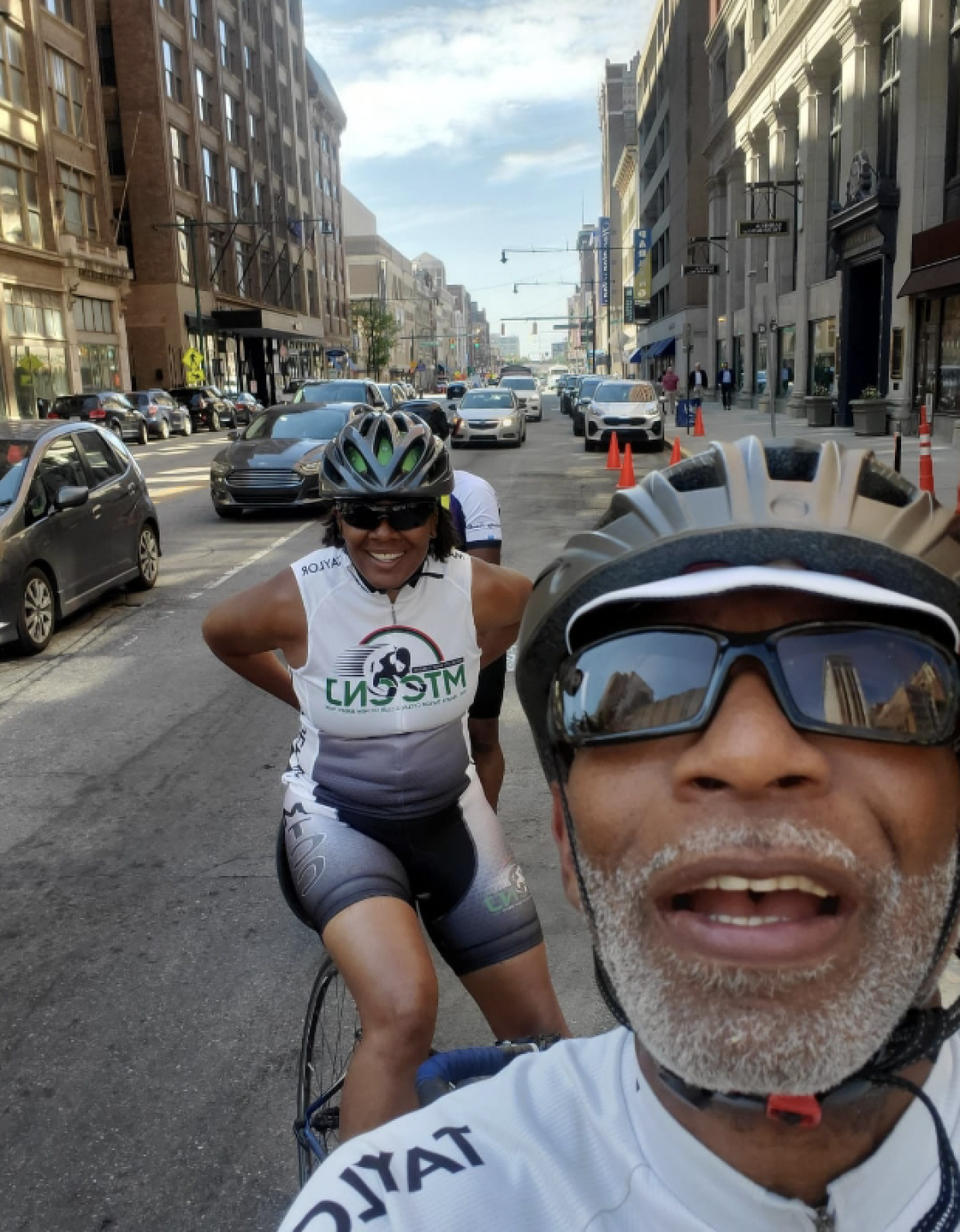
E-bikes are booming, and they’re making cycling more accessible for older riders—if and when they need or want them.
“Down the road we will probably look into e-bikes, but we’re not ready for that yet” says McKee. “But we’ll do whatever we need to in order to keep riding.”
Winston P. Lewis, 62, from Newark, New Jersey, who has been cycling since he was young as a means of transportation, is open to switching to an e-bike one day. “My outlook for the future is to cycle until I can’t with an e-bike. It will extend how long I can ride. I will be doing more touring, and you can see so much more because of the speed,” he says.
7. Don’t skimp on high-intensity training
Cole is embracing increased amounts of progressively higher-intensity physical activity.
“In his book, Fast After Fifty, Dr. Joe Friel promotes the idea that we can positively impact the aging process by including progressive high-intensity training intervals or segments,” he says. “For example, this may look like riding at 90 percent effort for two minutes, then riding at 40 percent for three minutes in an alternating sequence for a period of 20 minutes, depending on fitness level and training goals.”
For what it’s worth, a recent study also points to the benefits of high-intensity exercise for older riders in terms of cardiorespiratory fitness, muscle function, and memory. While it’s perfectly fine to ride slow and easy, if you want to turn up the intensity of your rides, it can also offer some added health benefits.
8. Join a cycling group
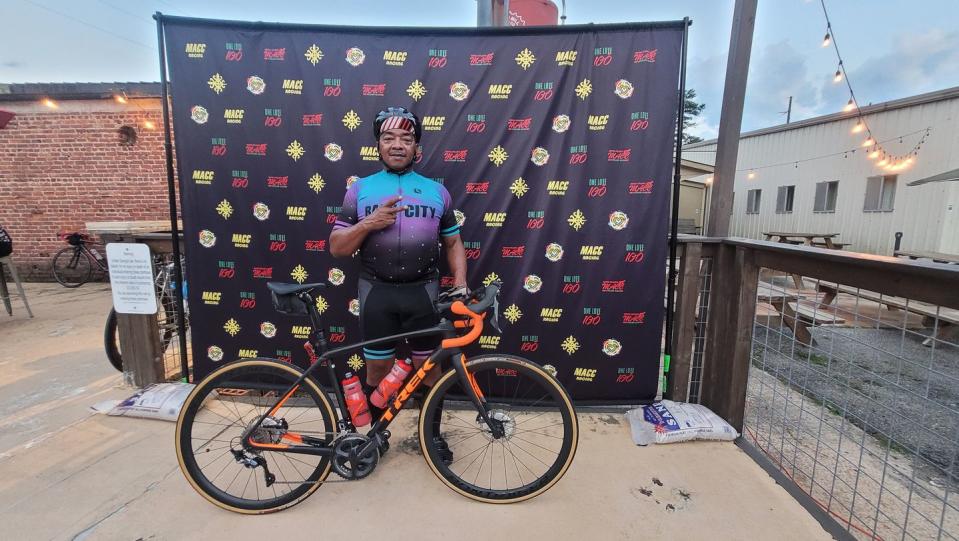
While solo rides are an incredible part of cycling, joining a local cycling group is a great way to remain social and find community.
“If you enjoy cycling but require motivation, look for a local club or group of friends to go cycling with,” says Ian Hallett, 62, who has been cycling for 58 years. “In the last 25 years, I have always had friends or cycling clubs to go cycling with, which has helped provide motivation.”
Mcfarley found his cycling group online and finds a strong sense of community with those he shares miles with.
“Being a person of color, it has been very exciting to see the growth of cycling in our Charlotte community,” he says. “I really look for an atmosphere of safety as well as help and encouragement for new riders. Currently, most of my rides are with KRT/QRT, as I like the fact they share many technical aspects of cycling to help group members get the most out of their cycling journey. I recently went through nine weeks of radiation therapy for a cancerous tumor, and the team reached out and uplifted me during my treatment which means a lot.”
9. Accept changing roles
Accepting where you are and whatever capacity you’re at is key to longevity in the sport.
“I want to keep cycling as long as my body will let me. I hope I have at least another 20 years. I know I will have to make adjustments in my riding style and capacity,” says Taylor. “My grandchildren want to ride with me and that encourages me to keep riding. My youngest daughter is also an avid cyclist and we enjoy riding together. I was patient with her when she was 13 and went on her first 20- or 30-mile rides with me. Now, she’s patient with me and encourages me on challenging climbs.”
Another way Taylor is accepting his changing role in cycling: helping others get into the sport. “I’m passionate about everything cycling: I love riding and talking cycling with others, and helping people with their cycling questions,” he says. “I help kids in the neighborhood with their bikes. If I see a kid with low tires... we put some air in their tires. Accepting my reduced capacity is something I’m struggling with, however, my love of cycling keeps me going.”
10. Ride for yourself
“It doesn’t matter how fast or strong another rider is. Ride for your enjoyment and your pleasure. Challenge yourself against yourself and not someone else. Enjoy the ride!” says Taylor.
“Don’t get caught up with the abilities of others that have been cycling for many years—stay within your zone and focus on your goals,” Nicholas adds. “You will be amazed at where you can go with it by just taking that first pedal stroke.”
It’s also important to come back to the reason you’re riding, which will keep you focused on your own journey and not worrying about what others might be doing. “As an older cyclist what has kept me pedaling strong all these years is the feeling of freedom,” Lewis says.
Mcfarley has a similar sentiment: “Decide what you want from cycling—maybe it’s a fast group ride, a long leisure ride, or maybe even competition,” he says. “Just get out there and keep moving—it’s the elixir of life for us seasoned individuals.”
You Might Also Like

